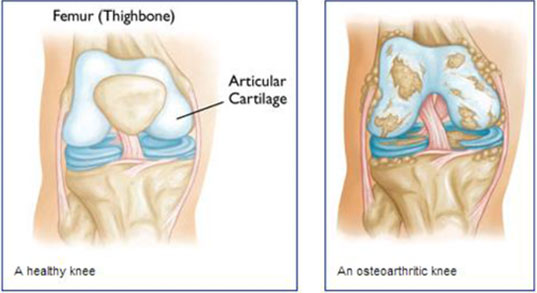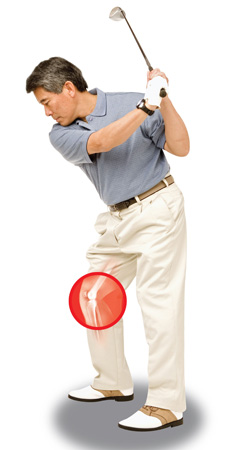Understanding Osteoarthritis

What is Osteoarthritis?
The word Osteoarthritis comes from three Greek words meaning bone, joint and inflammation. Osteoarthritis is one of the causes of pain and disability.
Osteoarthritis begins in the cartilage - an essential part of the joint. Cartilage is a smooth, slippery tissue that covers the ends of the bones as
they come together in joints. Not only acting as a shock absorber, it also enables the joint to move smoothly. Healthy cartilage is extremely strong
and flexible and allows the joints to move smoothly and painlessly. However, in Osteoarthritis, the cartilage is damaged and gradually wears away.
Osteoarthritis will result in pain, stiffness and swelling in the affected joint. The pain and discomfort can turn worse as the day progresses.
Due to the pain and stiffness, resting the joints tends to provide relief. However, as you rest the joint more often, the muscles surrounding
the joint will then weaken.
As the cartilage wears away, the joints may slowly become bigger (boney) as the body tries to heal itself. The process of wear continues with
time until little or no cartilage is left in the affected joint. This causes the bone to rub against bone. The resulting pain and stiffness are
typical of advanced Osteoarthritis.
Damaged cartilage can also affects the joint components and causes other problems inside the joint. Fragments of damage cartilage or bone may
float in joint fluid, causing pain and irritation. Inflammation may occur in the joint lining due to cartilage breakdown. Inflammation is a
medical term describing pain, stiffness, redness and swelling. Besides that, the joint may lack of a substance called hyaluronan
(hyaluronic acid) which affect the joint’s ability to absorb shock.
Stages of Osteoarthritis
The progression of osteoarthritis is divided into mild, moderate and severe.
- Mild - This is the stage where people may begin to experience symptoms of joint pain. For example,
knee pain after a long day of walking or running, greater stiffness in the joint when it is not used for several
hours.
- Moderate - Those with moderate osteoarthritis are likely to experience frequent pain when walking,
running, bending or kneeling. They may experience morning stiffness or stiffness after sitting for long periods
of time. Swelling at the affected joint may be present after extended periods of motion. X-ray at the affected
joint may shows that the cartilage between bones has obvious damage, and the space between the bones is narrowing.
- Severe - Those with severe osteoarthritis may experience great pain and discomfort when walking or
moving the joint. At this stage, the joint space between bones is dramatically reduced - the cartilage is almost
completely worn out, leaving the joint stiff and possibly immobile.

